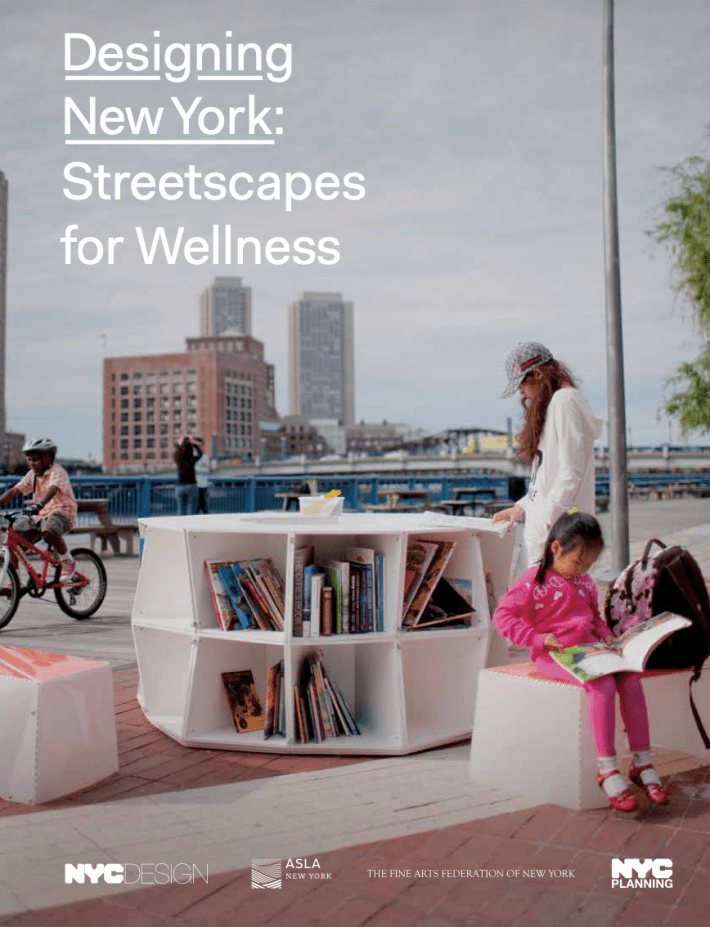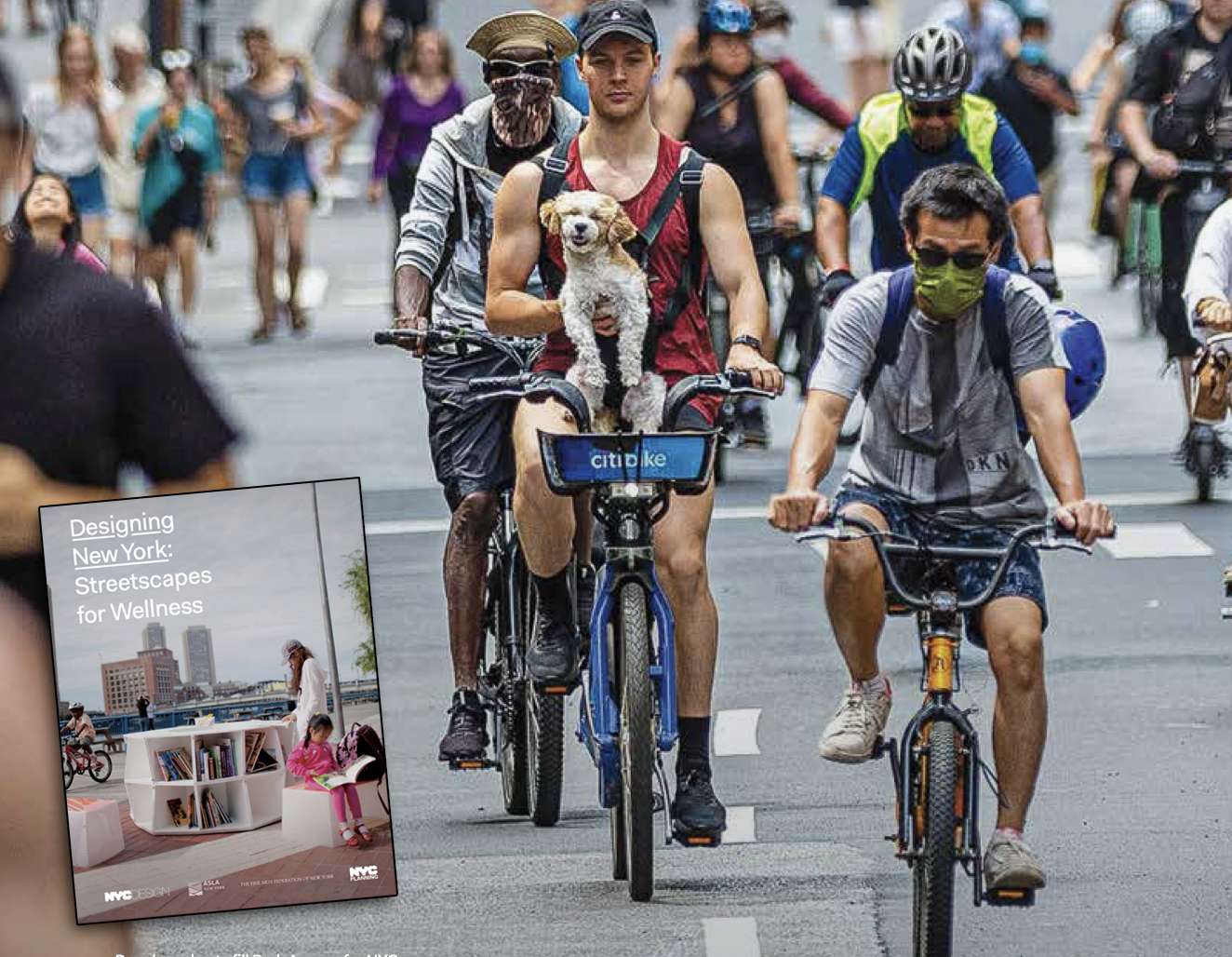
Comprising more than a quarter of New York City’s land area, streets are arguably one of the city’s most readily accessed and underutilized public resources. The Covid-19 pandemic underscored that the planning, design, programming, and maintenance of our streets are all inextricably tied to quality of life and to the wellbeing of our city’s communities, economy, and environment. As we reflect on our past and look to the future, how can we design and care for our streets differently to benefit the millions of people who occupy our public realm each day?
The New York City Public Design Commission’s new report, “Designing New York: Streetscapes for Wellness,” features approximately 30 case studies that illustrate how innovative public realm initiatives at a variety of scales may inform and inspire future visions for our streetscapes.
A multi-year collaboration with a range of city agencies, the New York Chapter of the American Society of Landscape Architects, the Fine Arts Federation of New York, and other community-based organizations, planning, design, and streetscape advocacy groups, “Streetscapes for Wellness” showcases the positive impact of public-private partnerships and community-driven designs on the physical health, mental wellbeing, community adhesion, and environmental sustainability and resilience of our city.

It shows that by reframing wellness through these four urban design-informed lenses of health, public space design can improve the holistic wellness of individuals, communities, and ecosystems. Further, “Streetscapes for Wellness” urges us to draw inspiration from the people and places surrounding us, to listen to local knowledge, to allow for flexibility and experimentation, to foster a continued sense of stewardship, and to design for wellness.
But in a city where change is the only constant, and where construction is always happening somewhere, what does it mean to rethink the future of our streets for wellness? After New York City’s iconic grid supplanted much of our colonial-era roadways, permitting rapid development during a population boom, broad sidewalks characterized the city’s avenues, allowing generous spaces for pedestrians. But for the last eight decades, car efficiency has been the organizing principle of most U.S. city planning. Highways built then still today block access to waterfronts, open spaces, transit hubs, social networks, and other communities — with all manner of negative health impacts. These inequities, created by a history of racism in urban planning, are persistent and difficult to eradicate.
But city streets can shift to benefit people. New York City’s open streets program reclaimed street space for pedestrians, increasing the amount of open space and improving public space. Individuals, community-based organizations, and small businesses affected change within their neighborhood streets and served as a proving ground for future capital projects and urban design policy. But what worked for some communities did not necessarily work for all.
As we plan for the recovery of our city, we must take stock of what initiatives have worked well and where we have fallen short. Today, widespread public access to community health and environmental data has made the impacts of past injustices easier to pinpoint — but we must do the work. We must engage with the many stakeholders in our city’s diverse communities and make equity a primary consideration as we plan, design, program, and care for our streets. This report helps us share information, tools, resources, and lessons learned.

The incredible outdoor experiments of the pandemic should inspire everyone involved in designing public spaces, and it has inspired the Adams administration. But just as importantly, we urge New Yorkers to continue to innovate and advocate for the public realm uses that improve public health and wellness within their communities. Your creativity and stewardship help us to make your visions a reality as we rethink our great city’s public realm.
Jenna Miller is a transdisciplinary designer focused on advancing equity in the public realm. She is co-founder/principal of design firm RUEd’ ARCH and deputy director of urban design and policy at the NYC Public Design Commission. Sreoshy Banerjea is the executive director at the Public Design Commission. She is the 2021 winner of the AIANY chapter’s Service to the City award, which recognizes those who have made tangible contributions to make New York City a better place.






